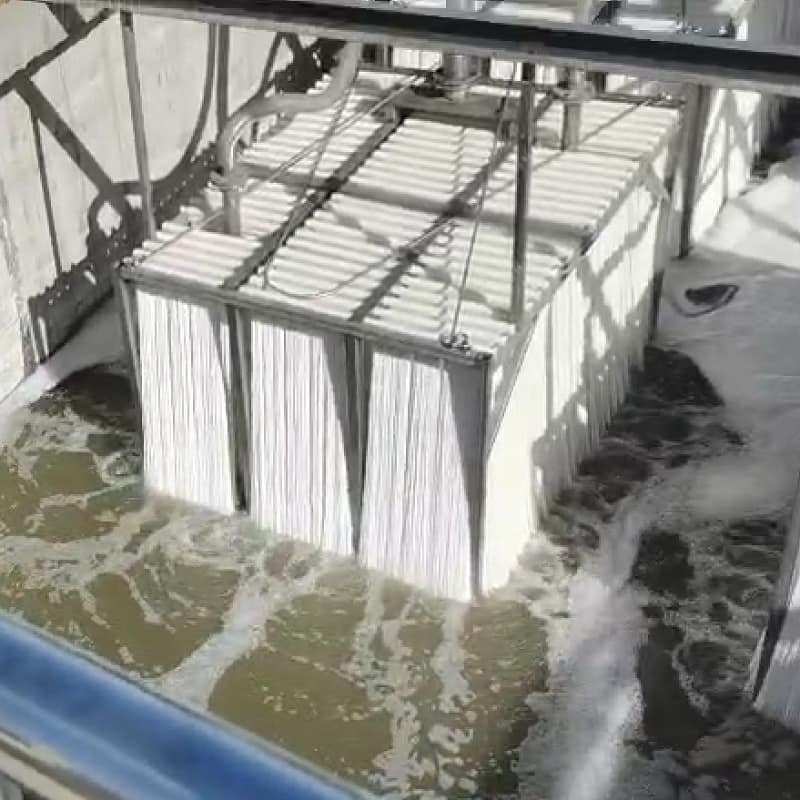How to Handle and Recover Wastewater Treatment Plant Shutdowns
Regardless of the cause, the way you respond during downtime and recovery directly affects effluent quality and operational safety.
This guide provides practical strategies for wastewater treatment plant shutdown recovery, from emergency measures to system restart and long-term optimization.
1. Emergency Actions During Shutdown
The first few hours of a shutdown are critical. Immediate action can prevent equipment damage and keep microbial communities alive.
- Activate emergency protocols: Notify operators and maintenance staff, confirm the cause of shutdown, and isolate inflows to prevent untreated wastewater from entering downstream units.
- Protect key equipment: If power backup is available, maintain minimal aeration to keep microbes alive, run sludge recirculation pumps intermittently, and shut down unnecessary mixers to prevent wear.
- Sludge management: For shutdowns longer than 24 hours, add carbon sources (such as glucose) or maintain low-load operation to prevent microbial decay. Monitor sludge volume index (SV30) and MLSS, and waste excess sludge if needed.
- Monitor water quality: Regularly check pH, DO, and temperature in equalization tanks and bioreactors to prevent deterioration.
- Energy management: Use backup generators to support critical units. Reduce chemical dosing to avoid unnecessary consumption during the downtime.
2. Step-by-Step Recovery Process
Restarting a wastewater treatment plant should not be rushed. A stepwise recovery helps prevent shock loading and ensures compliance with discharge standards.
- Inspection before restart: Confirm the root cause of shutdown is fixed. Inspect pumps, valves, pipelines, and electrical systems, and clear blockages before reintroducing flow.
- Gradual system restart: Start with 30–50% inflow loading, then increase stepwise. Enhance aeration to restore DO to 2–4 mg/L. Restart grit chamber, screens, and equalization tank before biological treatment.
- Sludge system recovery: Reactivate sludge recirculation at 50–100% return ratio. Check microbial activity under microscope before resuming full operation.
- Final polishing units: Restart filtration and disinfection only after biological processes stabilize, ensuring consistent effluent quality.
3. Optimization and Troubleshooting
Even with a controlled restart, plants may face operational issues. Quick adjustments help shorten the recovery period.
- Parameter adjustments: Fine-tune aeration, sludge return ratio, and nutrient balance (C/N/P ratio) based on influent conditions.
- Common issues: If sludge bulking or foaming occurs, apply coagulants or modify aeration. For slow microbial recovery, add bio-augmentation cultures or nutrients.
- Effluent monitoring: Track COD, ammonia, TP, and SS closely to ensure discharge compliance during the first 72 hours.
4. Post-Recovery Actions
Once operations stabilize, preventive steps can reduce risks of future disruptions.
- Enhanced monitoring: Keep a high-frequency testing schedule for three days post-restart to confirm stability.
- Equipment servicing: Inspect and maintain equipment used during emergency, such as backup generators, aerators, and pumps.
- Safety measures: Test confined spaces (tanks, aeration basins, pipelines) for toxic gases like H2S and CH4 before entry. Ensure operators use proper PPE at all times.
- Process review: Document the shutdown event, update emergency protocols, and improve preparedness for future disruptions.
5. Related Resources
For more insights on wastewater treatment challenges, check out our blog on
summer wastewater treatment plant operation challenges.
You may also find the U.S. EPA NPDES resources useful for regulatory compliance.
Conclusion
A wastewater treatment plant shutdown is disruptive, but with the right strategy, the impact can be minimized. From immediate emergency measures to structured system recovery, every stage requires careful planning and execution. Operators should not only focus on restarting processes but also on long-term resilience — such as preventive maintenance, reliable backup power, and regular staff training. By integrating technical recovery steps with strong safety practices and thorough documentation, facilities can ensure compliance, protect the environment, and maintain community trust even after unexpected disruptions.
Ultimately, effective wastewater treatment plant shutdown recovery is about preparation as much as execution. The more robust your contingency plan, the smoother your restart will be when challenges inevitably occur.

